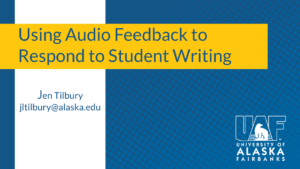Roleplay
DERIVATIONS OF ROLEPLAY
Explicit roleplay has a rich history in education. Law students use mock-trials to hone their craft; counsellors roleplay client contact sessions, and many disciplines require students give presentations or perform project work while acting in the role of the professional they hope to become. In fact, the dialectical method of Socrates is a form of roleplay, wherein participants adopt an aspect for an argument not necessarily their own.
There is also a great deal of implicit roleplay in education. As educators, we often adopt teacherly or professorial mannerisms and accoutrements when we stand before a class. And, as part of the same mechanism that drives us teachers to act teacherly, students act…well, student-y.
Recognizing this dynamic, we can begin to manipulate it purposefully. Come to class in character. You can be Charles Darwin, Mary Shelley, Marie Curie, Franz Kafka…the list is, of course endless. If not you, then consider asking your students to assume the identity of a figure pertinent to your subject. Host a discussion between Wallace and Darwin or a debate between Stalin and Trotsky. Expressing another’s argument requires deep understanding the person and that person’s historical context, and thus this activity fosters multi-faceted empathy and rich learning outcomes.
EXPLICIT ROLES
This past semester, we had the opportunity to experiment with designing explicit roleplay directly into the fabric of a course. Dr. Rob Prince, UAF CITE Fellow, worked with UAF CTL to improve student engagement in his online Journalism 101 course, “Media and Society.’ Together, we designed the student experience around a central narrative that included several gamified mechanics, such as roleplay. On the first day of class, students were welcomed to the Haveman Media Corporation as interns. They were informed that the corporation was foundering and in need of fresh ideas if it was to survive. As students completed “human resource assessments’ (quizzes) and turned in their reports and analyses, they gained points, rising in rank from mailroom clerk to executive editor, determining the future of the company along the way. To help guide the narrative, not all of the student avatars in the online cohort were actual students. Some of them were actually alter egos of the instructor (working with the design team) who were designed to model extremes of student behavior and serve as examples (and in some cases, foils) for the cohort.
CRAFTING ROLES
Instructors already play many parts for their students: evangelist, accomplice, disciplinarian, shepherd, authoritarian, counsellor, friend, mentor. We don’t always take advantage, however, of all the horsepower inherent in the flexibility of identity, and how, in a space where we are already comfortable inhabiting roles, we can design fun activities that ask both the students, and ourselves, to use that ability more explicitly for focused learning activities.
This is Part One of a three-part series.
Read Part One: https://ecampus.uaf.edu/go/tt-powerofplay
Read Part Two: https://ecampus.uaf.edu/go/tt-powerofplay2
Read Part Three: https://ecampus.uaf.edu/go/tt-powerofplay3




